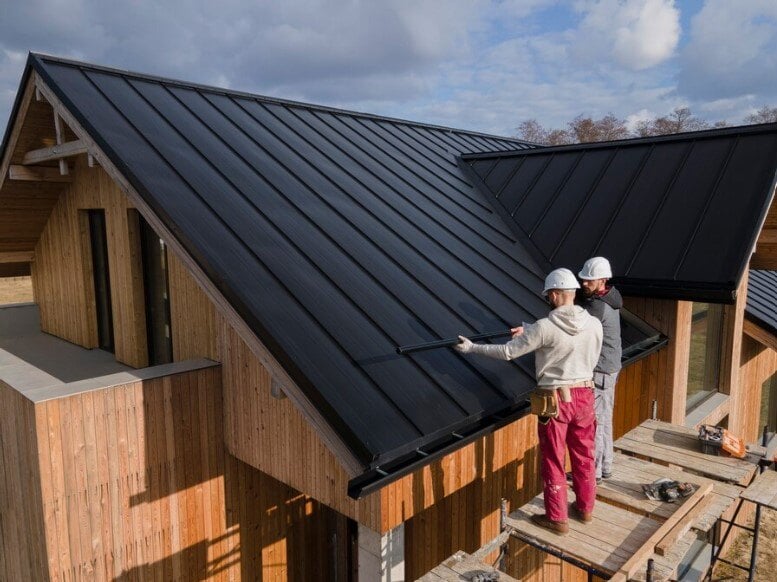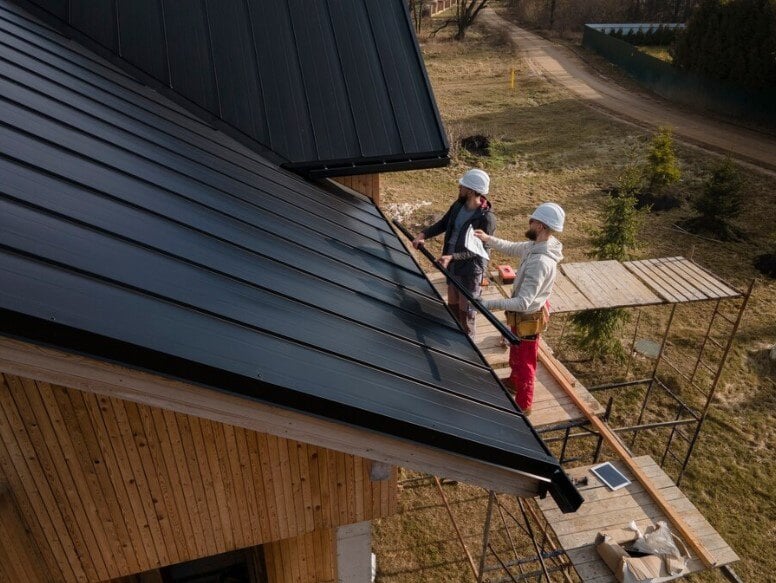When it comes to protecting your home, the roof plays an essential role. While there are many roofing materials available, metal roofing has become a popular choice for homeowners looking for durability, energy efficiency, and long-term value. If you're considering replacing your roof or building a new home, understanding the benefits of metal roofing and the process of installation can help you make an informed decision.
For expert advice on roofing, consulting professionals like Long Island roofing contractors can be a great first step. Their team understands the nuances of different roofing materials and can guide you toward the best option for your home.

Why Metal Roofs Are Gaining Popularity
Metal roofs have come a long way in recent decades. No longer associated solely with barns or industrial buildings, they now come in a variety of styles, colors, and finishes that mimic traditional materials like shingles, tiles, and even wood shakes. Here’s why more homeowners are making the switch:
1. Unmatched Durability
Metal roofs are built to last. Unlike asphalt shingles that may need replacement every 15–20 years, a well-maintained metal roof can last 50 years or more. Metal is resistant to cracking, warping, and other forms of deterioration that plague traditional materials. It can also withstand extreme weather conditions, including heavy snow, strong winds, and hailstorms.
2. Energy Efficiency
Metal roofing reflects solar heat, which can help reduce cooling costs in the summer. Many metal roofs are coated with reflective pigments that further enhance their energy-saving properties. This energy efficiency not only lowers utility bills but also reduces the overall environmental impact of your home.
3. Eco-Friendliness
Most metal roofs are made from recycled materials and are 100% recyclable at the end of their lifespan. This makes them an environmentally responsible choice compared to asphalt shingles, which often end up in landfills.
4. Low Maintenance
Metal roofs require minimal upkeep. With proper installation, they resist leaks, mold, and pests. Occasional cleaning and inspections are usually all that’s needed to keep a metal roof in great condition.
5. Enhanced Curb Appeal
Metal roofs are available in a variety of designs, offering homeowners the flexibility to choose a style that complements their home's architecture. From sleek modern panels to textured finishes that mimic slate or clay tiles, metal roofs can enhance the aesthetic appeal of any home.
The Installation Process: What to Expect
Installing a metal roof is a more specialized process compared to traditional roofing materials. Working with experienced professionals ensures a seamless and durable installation. Here’s an overview of the steps involved:
1. Initial Assessment and Preparation
Before installation begins, your roofing contractor will assess the condition of your current roof. This involves checking for damage, measuring the roof’s dimensions, and determining the type of metal roofing that best suits your needs. Any necessary repairs to the roof deck are also completed during this phase.
2. Removal of Existing Roof (if needed)
In many cases, metal roofs can be installed directly over existing shingles. However, if the old roof is severely damaged or if local building codes require it, the old materials will need to be removed. This step ensures a solid foundation for the new roof.
3. Installation of Underlayment
A high-quality underlayment is crucial for moisture protection. This layer acts as a barrier, preventing water from seeping into the roof deck. It also adds an extra layer of insulation and reduces noise from rain or hail.
4. Attaching Metal Panels or Shingles
Once the underlayment is in place, the metal panels or shingles are installed. Each piece is secured using specialized fasteners designed to handle the thermal expansion and contraction of metal. The seams between panels are sealed to prevent leaks.
5. Adding Flashing and Finishing Touches
Flashing is installed around roof penetrations, such as chimneys, vents, and skylights, to ensure a watertight seal. Ridge caps and edge trims are also added to complete the roof’s look and functionality.
The Cost Factor: Is It Worth It?
One of the most common concerns about metal roofing is the upfront cost. While it’s true that metal roofs are more expensive to install than asphalt shingles, their long-term benefits make them a cost-effective choice. Here’s why:
- Longevity: A metal roof’s lifespan is two to three times longer than that of traditional shingles, eliminating the need for frequent replacements.
- Energy Savings: The reflective properties of metal roofs can significantly lower cooling costs, especially in hot climates.
- Increased Home Value: A metal roof can enhance your home’s resale value. Potential buyers often view it as a premium feature, making your property more attractive in the market.
- Reduced Maintenance Costs: With fewer repairs and lower upkeep requirements, metal roofs save you money over time.
Common Misconceptions About Metal Roofs
Despite their many advantages, metal roofs are sometimes misunderstood. Let’s debunk some of the most common myths:
1. “Metal Roofs Are Noisy”
Many people assume metal roofs will be loud during rain or hailstorms. In reality, the underlayment and insulation dampen noise, making them no louder than traditional roofs.
2. “They Attract Lightning”
Metal roofs do not increase the likelihood of a lightning strike. In fact, metal is non-combustible and can safely dissipate the energy of a lightning strike, making it a safer option.
3. “They Rust Easily”
Modern metal roofs are treated with protective coatings that prevent rust and corrosion. With proper maintenance, they retain their appearance and functionality for decades.
4. “They’re Too Heavy”
Metal roofing materials are surprisingly lightweight compared to alternatives like clay tiles or concrete. This makes them suitable for most homes without requiring structural reinforcements.
Tips for Maintaining a Metal Roof
While metal roofs are low maintenance, a little care can go a long way in ensuring their longevity. Here are some tips:
- Regular Inspections: Check for loose fasteners, damaged panels, or debris that could cause damage.
- Keep It Clean: Remove leaves, dirt, and other debris to prevent water buildup and potential corrosion.
- Clear Gutters: Ensure your gutters and downspouts are free of clogs to avoid water pooling near the roof’s edges.
- Address Issues Promptly: If you notice any damage, such as scratches or dents, repair them quickly to prevent further deterioration.

Is a Metal Roof Right for You?
Choosing the right roofing material depends on your budget, aesthetic preferences, and long-term goals. If you’re looking for a durable, energy-efficient, and low-maintenance option, a metal roof might be the perfect fit for your home.
Investing in a metal roof is more than just a practical choice—it’s a decision that can enhance







